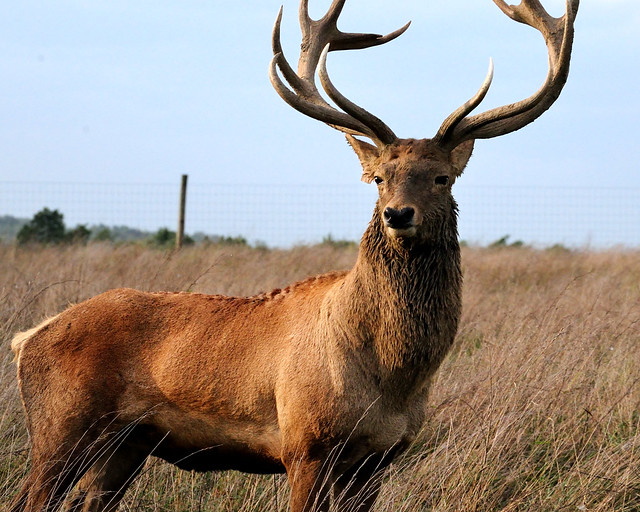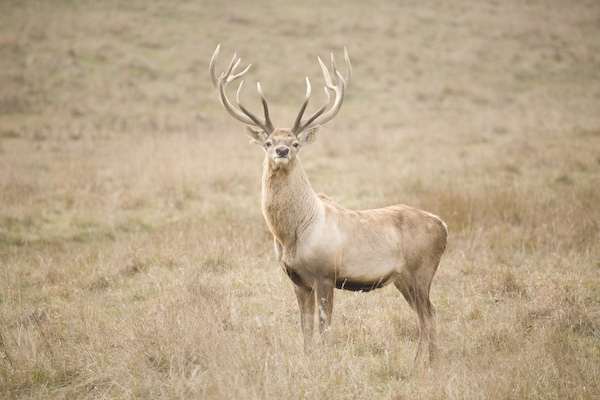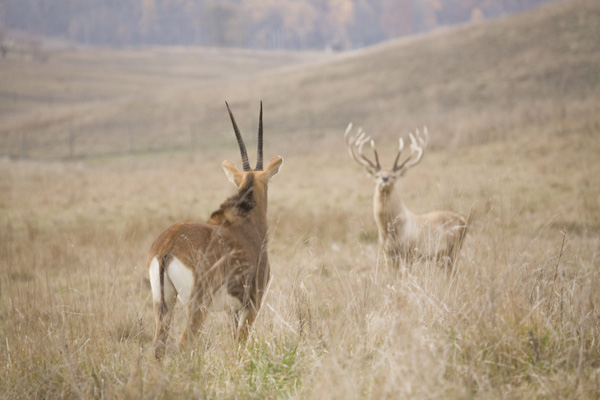Bactrian deer
Bucharahirsch
The Bucharahirsch (Cervus elaphus bactrianus ) or Bactrian Red Deer is a subspecies of red deer (Cervus elaphus ). Until recent years, the red deer was pooled together with the Wapiti a kind of Cervus elaphus. This type would have shown a continuous distribution of Eurasia to North America. As evidence for this view was, inter alia, that these deer were able to agree among themselves testify capable of fathering offspring. DNA studies show that red deer are divided into two types. The elk (Cervus canadensis) from East Asia and North America as well as Western red deer (Cervus elaphus ) from Europe, North Africa and Asia Minor. The middle Asian red deer, including not only the Bucharahirsch also the Jarkandhirsch (Cervus elaphus yarkandensis ) is expected, are more closely related with the western red deer, however, form an original subgroup and may even provide a separate species dar. Bucharahirsch and Yarkandhirsch are after these studies suggest related and could possibly be a single subspecies ( Cervus elaphus yarkandensis ) are summarized.
Description
The Bucharahirsch reaches a length of 210 cm; the withers is 120 cm. The tail is 22 cm long. It weighs between 120 and 200 kg. The fur color varies from reddish brown to grayish in summer and winter. Tail and mirrors are whitish. In females, a weak spot pattern can be seen. The young are spotted striking. The legs are quite short. The yellowish antlers are not as pronounced as with its European cousins . It has a simple long and the end yoke Eissprosse does not exist.
Distribution, subspecies status and habitat
His former distribution area included Turkmenistan, the Amu -Darya region in the triangle Afghanistan, Uzbekistan ( Kashkadaria, Samarqand ) and Tajikistan and the Syr -Darya region in Kazakhstan. For Afghanistan because of the war are no current figures. Its habitat riparian deciduous forests, riparian forests and semi-deserts.
The Jarkandhirsch (Cervus elaphus yarkandensis ), which may be identical to the Bucharahirsch was already declared extinct. Meanwhile, however, we know of about 5,000 live animals in the Tarim Basin. This subspecies is considered endangered.
Way of life
After a gestation period 238-245 days a calf is born normally. Its diet consists of grasses, herbs and foliage.
Endangering
He used to be widespread in the flooded areas in Afghanistan, Kazakhstan, Tajikistan, Turkmenistan and Uzbekistan. His natural enemies included the Caspian tiger. Destruction of riparian forests and trophy hunters have let the stocks shrink greatly. The absolute low point of the inventory numbers was reached in the mid-1960s. At that time there were only about 300-400 animals left. Apart from some tiny remnant populations, the subspecies was then limited to the Tigrowaja - Balka Nature Reserve and the Aral Paigamba Reserve. By 1977, the stocks recovered thanks to cross- protection measures, and the animals could be reintroduced to several reserves. Twelve animals were 1960/61, also located in Ramit Reserve, which actually does not have significant populations of the river vegetation ( Tugai ) features, which otherwise is the typical habitat of the Bucharahirsches. The fact that the animals find no increased suggests that the Bucharahirsch originally inhabited the mountains of the region. By 1977, the number of deer had increased again to more than 900 animals. Ongoing poaching and the collapse of the Soviet Union led since the late 1980s to drastic population declines. In the late 1990s the stocks had fallen to 350-400 animals throughout Central Asia, reaching nearly the worst of the 1960s. With the support of WWF, the stocks rallied to 2006 back to about 1000 animals. The deer have now been settled in other protected areas, such as the Altyn- Emel national park in Kazakhstan. Thanks to the efforts of the Cologne Zoo, who leads the International studbook for this species of deer, a European conservation breeding program was created that allowed the population in European zoos up to 80 individuals increased. Using a Scientific Institute of Wildlife Biology from France a breeding station was created in Uzbekistan, where the population rises again. In Tigrowaja - Balka Reserve in Tajikistan the stock in 2011 was according to different estimates 130-270 copies.










